“The Chemistry of Biology: An Alchemy of DNA” (2017) references alchemical desires to ‘transmute’ matter into new forms, create panaceas to cure any disease, or to find the secret of immortality, Anna Dumitriu has woven together complex historical narratives with synthetic biology, DNA sequencing, and new super-resolution imaging technologies in an attempt to deconstruct what DNA is and what it means to us.
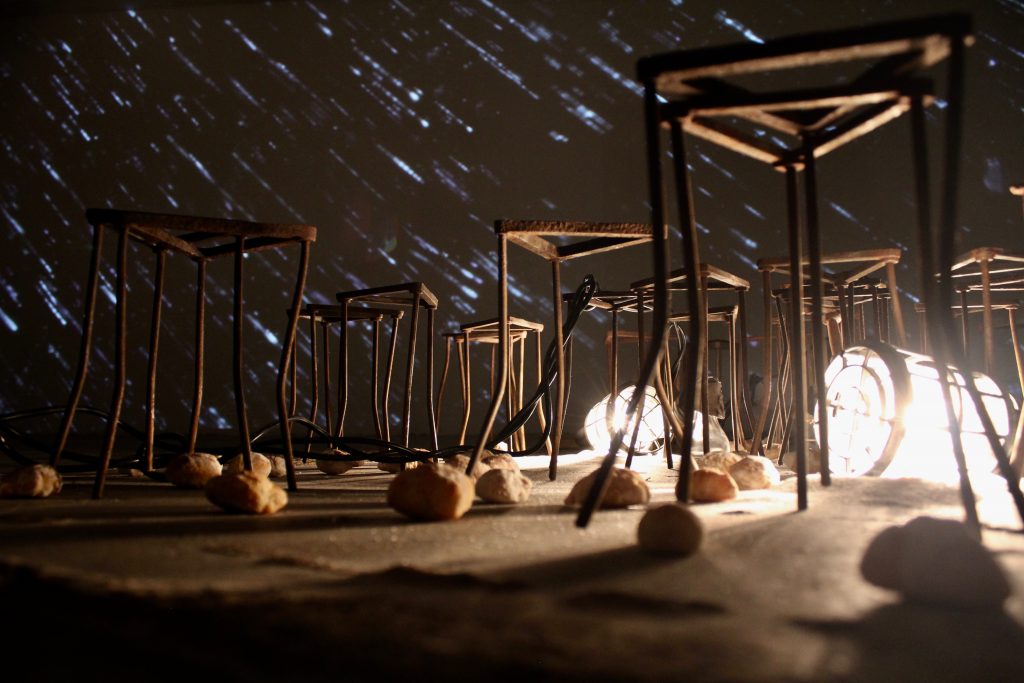
The artist had edited the DNA in the genome of a bacterium using a technique known as CRISPR to cut out a fragment that makes the organism resistant to antibiotics and scarlessly repair it with a section of DNA encoding the phrase “Make Do and Mend” as part of her previous project of the same name. In this new project she collaborated with Dr Robert K. Neely and his team from the University of Birmingham and the EU BeyondSeq Project and worked with new super-resolution laser imaging technologies using fluorescent molecules which made it possible to physically observe the area of a CRISPR genetic modification for the first time.
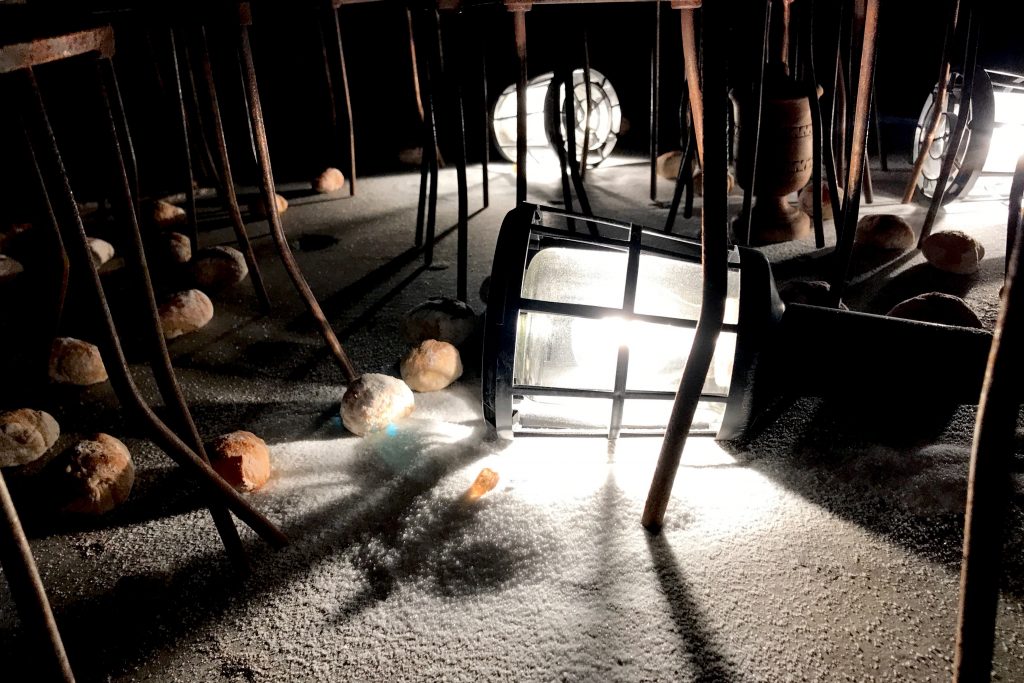
She created a video installation from actual still images of the DNA strands as seen under the microscope. The genetically modified sections were identified through image analysis software and revealed by the artist through visual effects and data sonification. The video work was foregrounded by sculptural elements which interwove contemporary biochemistry and the historical aims of alchemy. The work considers ways in which the science changes, but our aims and desires remain the same.
The elements have symbolic qualities: the shapes of the Bunsen burner stands, ubiquitous in school chemistry lessons, represent alchemical symbols for the four elements; the pieces of bread represent knowledge and evolution and are baked to contain the four DNA bases ATGC and positioned in the exact sequence of the CRISPR genetic modification; bottles contain the CRISPR/Cas9 ‘molecular scissors’ and DNA repair fragment in the form of plasmids; a pestle and mortar in the centre contains the 4 DNA bases and Deoxyribose, the raw material of living things; and salt because DNA is a salt rather than an acid.
The Geology of DNA
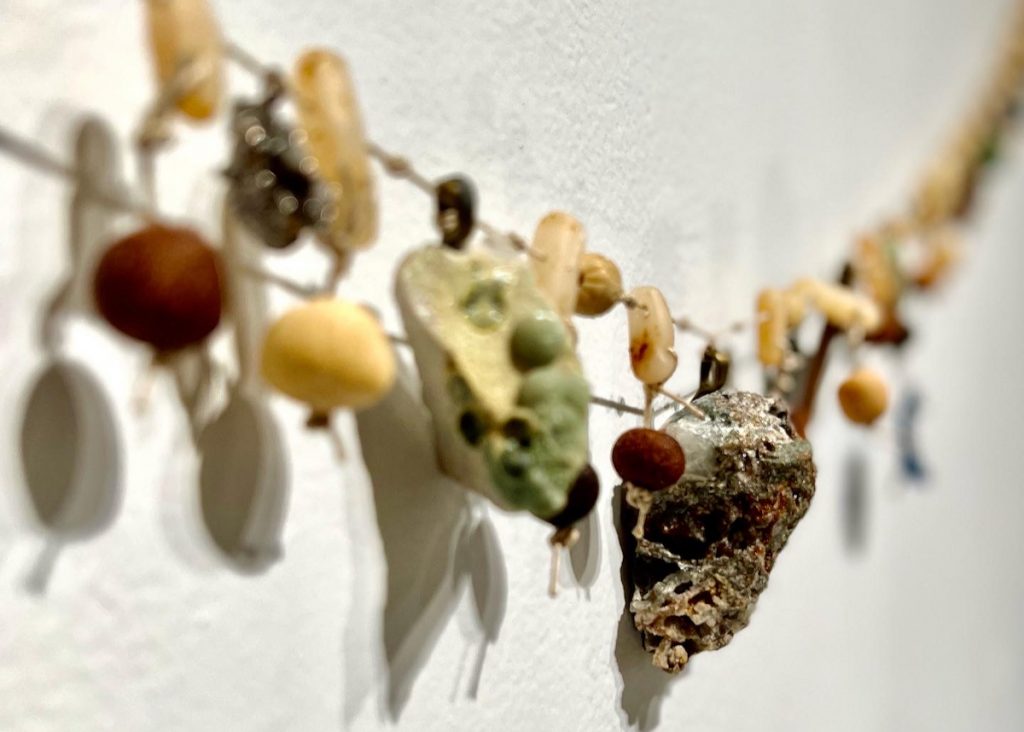
In 2020, Dumitriu returned to many of the concepts discussed with Neely, namely the question of what is DNA? In “The Geology of DNA” the artist further explores the structure and materiality of DNA. She has taken the section of DNA explored in the rest of the project, namely her “Make Do and Mend” CRISPR edit, and physically sculpted it in the form of the sugar-phosphate backbone of DNA, comprising phosphorus containing minerals such as bits of animal bone, meteorite, and even dinosaur droppings (coprolite), handmade deoxyribose containing polymer clay beads, and beads made of bread. The bread has been baked to contain the four DNA bases ATGC positioned in the exact sequence of the CRISPR genetic modification. Once every ten bases a scrap of linen dyed with Nile Blue, a fluorescent dye used in the lab, is attached, demonstrating how it would attach to the molecule itself using one of Neely’s ‘DNA mapping’ techniques. The strand is around 150cm long is designed to be hung in a long loop within an installation space with lighting to highlight the shadows it casts on the wall behind. Thanks also to geologist Dr Martin Mangler for advice on the geological aspects of this piece.
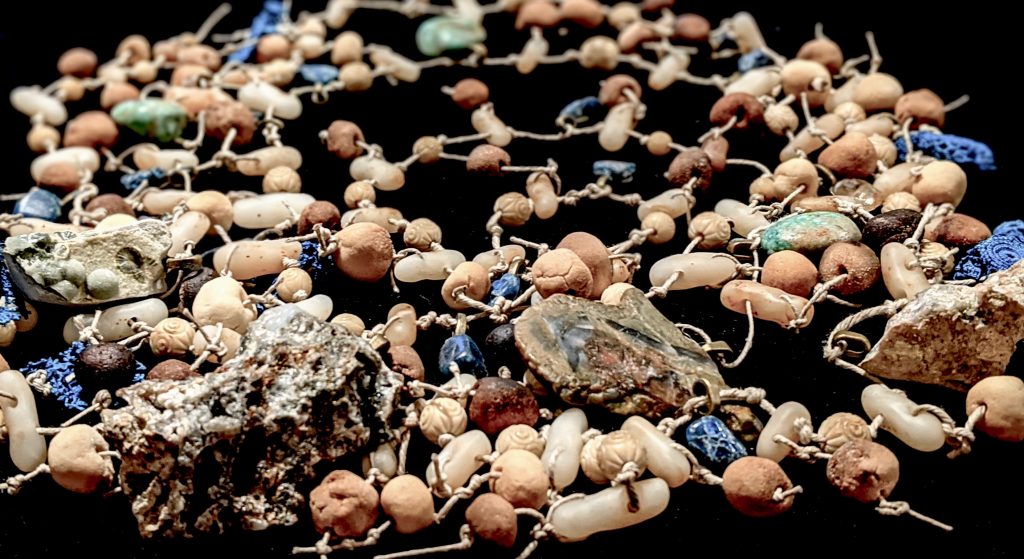
Exhibitions
“The Chemistry of Biology” was exhibited at Birmingham Open Media (BOM), explored the chemical nature of DNA, the enigmatic ‘instruction book of life, which at its base is simply a concoction of phosphorus, nitrogen, hydrogen, oxygen and carbon. The exhibition ran from 12th October – 26th October 2017 and the opening reception included a discussion between Anna Dumitriu and Dr Rob Neely chaired by Louise Latter, as well as DNA cocktails and DNA/chemistry activities led by members of the Neely Lab. There was also a chance to experience “Seeing the Repair” an award winning virtual reality experience of the project made in collaboration with Alex May.
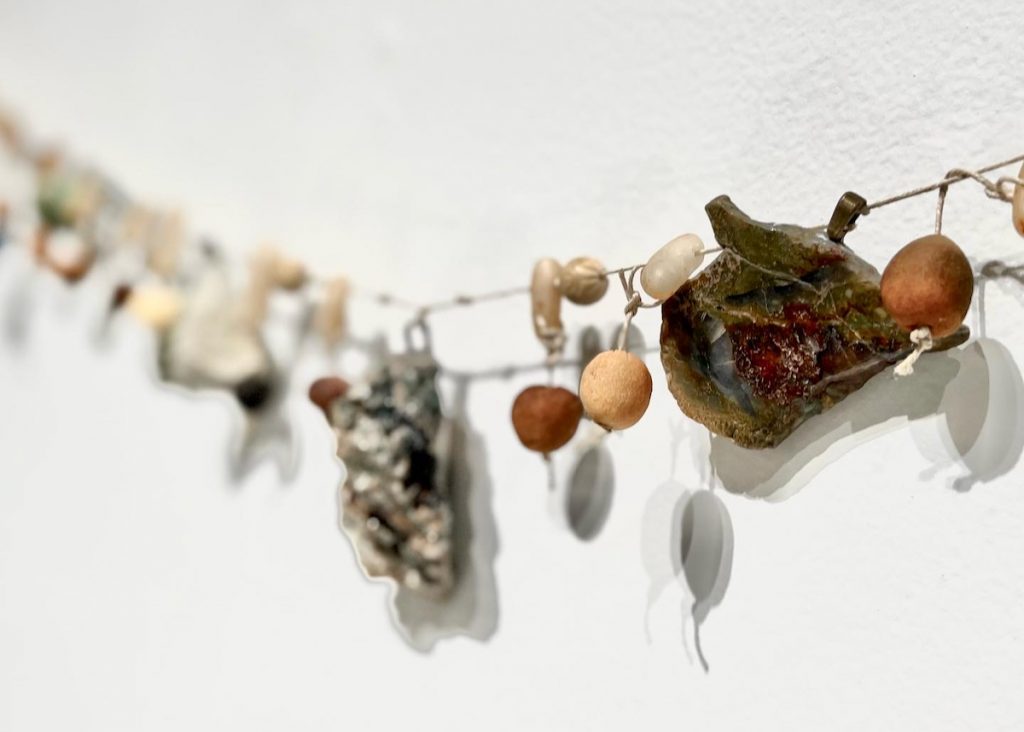
“The Geology of DNA” was included in “Collateral Effects” a solo exhibition of works by Anna Dumitriu, at the North Wall, Oxford, UK, from 5th to 29th October 2022.
Interview in Chemistry World
An Interview with Anna Dumitriu and Dr Robert K Neely discussing their collaboration Artistic inspiration: how a chemist and an artist are learning from each other by Rachel Brazil was featured in Chemistry World – the magazine of the Royal Chemistry Society published in January 2018.
Credits
Anna Dumitriu collaborated with Dr Robert K. Neely and his team from the University of Birmingham and the EU BeyondSeq Project to explore how new chemical tools in biotechnology will have far reaching cultural and scientific implications for the future. Their collaboration was funded by a Leverhulme Trust Artist in Residence Award. Special thanks also go to Nathaniel Wand and Dr Darren Smith from the lab. Anna Dumitriu also worked with digital artist Alex May to create the digital installation and with Dr Sarah Goldberg and Dr Roee Amit at the Synthetic Biology Lab for the decipherment of Genetic Codes at Technion/MRG-Grammar Project to do the genetic modification using CRISPR. That previous element of the work was funded by the EU FEAT project.
Leverhulme Trust Artist in Residence in the Department of Chemistry at the University of Birmingham
Anna Dumitriu undertook a 2017 Leverhulme Artist in Residence project engaging with the School of Chemistry at The University of Birmingham, collaborating with Dr Robert K Neely and colleagues to creatively explore the impact of new developments in chemistry on biotechnology. An important focus of the project was connected to the BeyondSeq research project, an EU-funded collaboration, which uses new forms of optical DNA mapping technologies to develop new diagnostic tools for important health conditions.
The project enabled the researchers, the artist and the public to reflect together on the future cultural impacts of the applications of new chemical tools for biotechnology and explore single-molecule and super-resolution imaging at the interface between chemistry and biology as a wholly new frontier in the aesthetics of the almost invisible sublime world of DNA.
Through the project Dumitriu further explored whole genome sequencing technologies and was able to learn about the importance of the chemistry of biology, as well as looking at the role of chemistry in antibiotics, building on her “Sequence‘ project.
The Neely Lab at the University of Birmingham
Anna Dumitriu was hosted within the Neely group at the School of Chemistry. The group are pioneering fluorescent labelling of the DNA molecule using an enzymatic approach. The result is a visualisation of the DNA sequence, something akin to a barcode that can be used to easily identify species. This project is part of a wider collaboration with members of the BeyondSeq consortium, an EU Horizon2020 project that aims to develop new tools for diagnosing genomic disorders. The collaboration with Dumitriu will allow the lab to explore new ways of visualising and better communicating its output with a wider public audience, as well as reflecting on the societal implications of their work.
